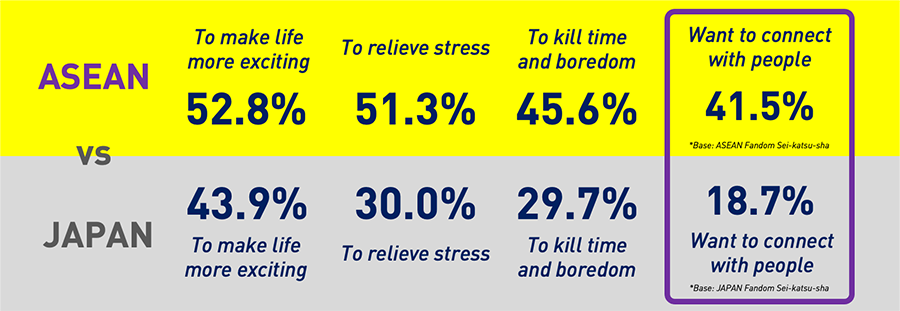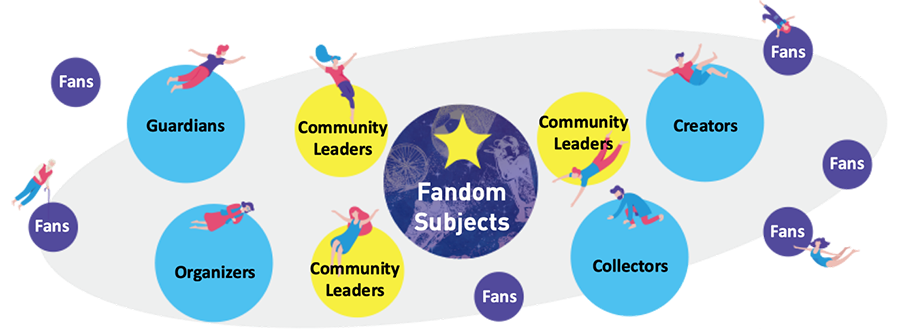A study on fandoms in Asean, plus Japan, delves into what matters for a fandom, with the resulting concept of “Matter-verse” being a manifestation of the core learnings, says HILL Asean’s Devi Attamimi.
Finding a welcoming fandom community is a good opportunity for brands. People in Asean see brands as a potential ally in supporting their fandom (51.6%), with the majority even willing to pay more for brands that are supporting their fandom (88.2%).
However, collaborating with fandom communities that brands can align with may not be that simple. Often, brands see communities merely as a medium to promote their brand. When all they see is numbers and what is trending right now, they are missing out on the full power of fandom.
From 2021-2022, HILL (Hakuhodo Institute of Life and Living) Asean conducted a study on fandoms in Asean countries (Singapore, Malaysia, Vietnam, Thailand, Indonesia and the Philippines) plus Japan. Combining qualitative and quantitative studies, HILL Asean sums up that fandom is about the alignment of things that matter.

Brand should not simply “tap in” but must be “in tune” with the fandom. Knowing what matters for a fandom is the first step. Secondly, fandom welcomes growth, helping members do things that matter to them and are key to fulfilling their deepest motivations when joining fandom, thus making their existence matter. HILL Asean coined the term “Matter-verse” as a manifestation of these core learnings.
Matter-verse wraps up what a fandom is and what it needs to be – a universe where fans can fulfil their hopes of being, feeling and doing all the things that matter.
Brands can thrive as part of this Matter-verse or perhaps even build their own brand Matter-verse by applying these principles from the perspective of understanding fandom better.
Principle 1: Fandoms are profoundly human
Some brands have their own global fandom status and many marketers spend most of their time cultivating brands to achieve such a level. Yet, only a few can truly attain it.
This study confirms that no fandoms can grow without strong human desires. Fandoms simply channel out what’s already there, inside those who share mutual feelings and want to be aligned with them. Similarly, this is how brands work as well, as a reflection of human emotions and aspirations.
Principle 2: More than being a fan
Fandom easily associates with hobbies as an antidote to mundane life but fandom is not just about being a fan of something – there’s also a sense of camaraderie evoked from mutually shared feelings.
Dominant Asean cultural traits such as “socially driven” are influencing the Asean fandoms’ characteristics. Many in Asean join fandoms to have a “sense of belonging” (49.1%), which is significantly larger in comparison with Japan (14%). People in Asean use fandom to have real connections rather than to be disconnected from reality. One even said that in fandom, he found family, showing how much familial feeling is ingrained culturally.

Principle 3: Personal growth and transformation platform
Three things that sum up fandom benefits are:
- A source of excitement and positivity
- Empowerment to gain self-improvement and new knowledge
- Giving a sense of belonging
For 87.1%, “Fandom changed their life for the better”. But is filling a void of connection enough as a life-changing experience? Most likely, no, because having connections also means new opportunities and joining fandom enables them to learn new things (52.8%) which improve their lives.
Fandom needs to provide space for interaction and activities between members. Regardless of platform (clubs, forums, fan pages, chat groups, etc), managing this space means roles to be filled by members. Those roles help them discover their hidden potential. One person said she learned so much from managing a fanbase that it actually helps her in her career.
Principle 4: Understanding fandom structure
A fandom community is often organised with layers of roles that are not necessarily hierarchical. Members can have multiple roles, eg not just consuming but also creating and earning from it. It’s also inclusive to people from outside the fandom as long as they support the activities inside.
It’s important for brands to understand their role before entering fandom. While they would welcome any handouts, a brand that actually fulfils what matters to them will have a special place and secure loyalty.

In general, there are several different roles:
- First, “community leaders”, setting rules and fan activities.
- Second, “organisers” that can be internal or external, most likely a platform or event where the activities of fandom are taking place.
- Next there are “creators” that contribute content or currency exchanged inside the fandom among “collectors”. Similar to organisers, they can be from inside or outside the community.
- Lastly, “guardians”, safeguarding rules and refuting negativity inside their fandom or from outside.
The quality of a fandom community correlates with two ideals that determine how thriving a fandom community is: equality (a place without judgment) and creativity (a place to foster productivity).
So the more flexible and accommodating, the better the community is. It’s like having their own utopian ecosystem surrounded by things that matter to them.
Brands that are willing to go deep in supporting this Matter-verse will enjoy the full power of fandom.

